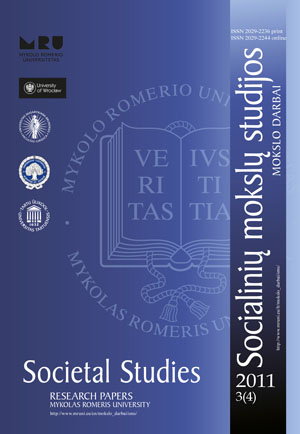Bendruomenės sampratos traktuotės ir tipologija
Approaches and Typology of the Concept of the Community
Author(s): Justinas Sadauskas, Irena LeliūgienėSubject(s): Social Sciences
Published by: Mykolas Romeris University
Keywords: community; types of communities; classification of communities; local community; community of neighborhood
Summary/Abstract: In order to create, organize and develop communities as well as to use their resources so that the problems will be solved and the needs met, it is important to know and to understand approaches to the community and the types of the concept. The purpose of the article is to overview the interpretation of the community concept and the criteria for community classification. The scientific literature analysis method was used for this purpose. In this article, with reference to scientific literature, various criteria for typology of communities are analyzed: purpose, sociological features, role in sharing knowledge, size, socio-cultural peculiarities, nature of community, functionality and creation of personal identity. Emphasis is put on the types of communities of interest and on territorial communities. The features of the concept of the territorial community are analyzed more extensively. A community consists of individuals participating in social interaction in a certain geographical location with one or more common ties and joined to other communities through the system of culture, interests and common activities. There are several types of communities: of place, of activities, institutional, virtual, interests and professional communities Apart from common territory, interests, virtual, professional and imaginary activities, it is imperative for communities to have members and a unifying sphere. The analysis of the territorial and neighborhood communities concepts disclosed that each of those concepts specifically highlights slightly different key aspects of the community related to the location: the geographical territory, inter-relations and interaction.
Journal: Socialinių mokslų studijos
- Issue Year: 3/2011
- Issue No: 4
- Page Range: 1281-1297
- Page Count: 17
- Language: Lithuanian

